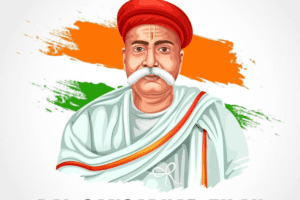Discover how technology has transformed the world of art. From virtual galleries to AI-generated masterpieces, it’s changing the game! #Technology #ArtRevolution
Technology has opened new possibilities for art, allowing for immersive experiences through VR, intricate sculptures through 3D printing, and online marketplaces for artists to share and sell work.
The world of art is constantly evolving, and technology has played a significant role in shaping its current state. From the way we create and consume art to the way we preserve it, technology has had a profound impact on the arts. In this article, we will explore how technology has revolutionized the arts and how it continues to shape the future of the art world.
The Creation of Art
One of the most significant ways technology has impacted the arts is in the creation of art itself. The advent of digital tools has changed the way artists create and has opened up new possibilities for art forms. Digital painting and illustration programs, such as Photoshop and Procreate, have made it easier for artists to create detailed and realistic artworks. 3D modeling and animation software, such as Maya and Blender, have allowed for the creation of highly detailed and realistic animations and videos. Additionally, advances in 3D printing technology have made it possible for artists to create sculptures and other physical artworks that would have been impossible to create by hand.
The Consumption of Art
Technology has also played a major role in the way we consume art. The internet has made it possible for people all over the world to access and view artworks from the comfort of their own homes. Social media platforms, such as Instagram and TikTok, have made it easy for artists to share their work with a global audience and gain recognition for their talents. Online marketplaces, such as Etsy and Society6, have made it possible for artists to sell their work to people all over the world.
The Preservation of Art
Technology has also had a significant impact on the preservation of art. The use of digital imaging and scanning technology has made it possible to create high-resolution copies of artworks that can be used for research, education, and conservation. Additionally, advances in materials science have led to the development of new conservation methods, such as the use of synthetic resins to stabilize and protect paintings and sculptures.
The Future of the Arts
Looking to the future, technology will continue to play a significant role in shaping the world of art. New technologies, such as virtual and augmented reality, will change the way we experience art. Virtual reality will allow us to immerse ourselves in artworks and experience them as if we were there in person. Augmented reality will enable us to see art in new and exciting ways, such as overlaying digital art on top of real-world environments. Additionally, artificial intelligence and machine learning will enable artists to create new forms of art that can respond to and interact with their environment.
Conclusion
Technology has had a significant impact on the art world, giving artists new opportunities and audiences new ways to experience art. Technology has made the art world more accessible to everyone, allowing for the creation of new and exciting art forms like virtual reality, 3D printing, and online art platforms.
How has technology affected the way art is perceived and produced?
New and exciting art forms can now be created thanks to technological advancements like 3D printing and virtual reality that have expanded the definition of what constitutes art.
What is the significance of virtual reality in the art world?
Artists can use virtual reality technology to create immersive and interactive art experiences for viewers, allowing them to participate in the work as well as view it. Visitors can now explore and interact with famous artworks like the Sistine Chapel and the Mona Lisa in a virtual setting thanks to this technology.
How has 3D printing impacted the art world?
By allowing artists to experiment with new materials and shapes, 3D printing has made it possible for them to create physical works of art like sculptures that were previously unimaginable. Like Joshua Harker’s “Echoes of the Past,” this technology has also made it possible to create sculptures that are more intricate and detailed.
What is the impact of social media and the internet on the art world?
Through online art marketplaces like Artsy and Saatchi Art, artists now have a new way to share and sell their work thanks to the rise of social media and the internet. In addition, these platforms give artists a place to show off their work and get feedback from other artists and people who like art, making the art community more vibrant and diverse.
How has technology made the art world more accessible?
By enabling the development of novel and exciting art forms that can be experienced in a variety of ways, such as virtual reality and 3D printing, technology has made the art world more accessible to everyone. Also, the rise of social media and the internet has made it easier for artists and buyers to communicate with one another and find new and interesting works of art.








